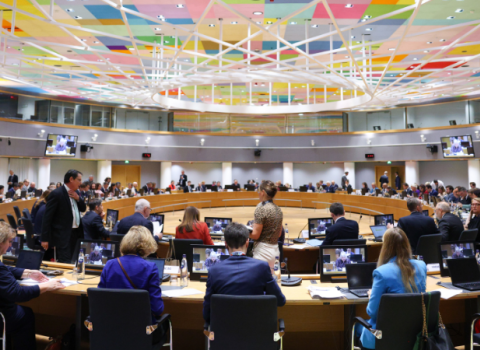Cohesion funds are tied to regional smart specialisation strategies, but these are divorced from EU industrial priorities

Photo credits: European Court of Auditors / European Union
The European Commission should build more connections between its top-down innovation policy and bottom-up regional specialisation strategies, according to a report from the European Court of Auditors (ECA) published on September 23.
The EU’s smart specialisation policy is meant to help regions focus on their unique strengths and potential so that cohesion policy funds are invested more efficiently. Regions are required to develop smart specialisation strategies as a condition of receiving research and innovation funding from the European Regional Development Fund (ERDF).
“It is crucial to reconcile bottom-up and top-down approaches and to ensure that measures actually implemented in the regions are consistent with decisions taken at EU level,” said Annemie Turtelboom, the ECA member responsible for the review. “Otherwise, we will simply fail to achieve a more strategic and effective use of EU funds.”
The ERDF is one of the main instruments of the EU’s cohesion policy and aims to reduce disparities between regions, including by developing research and innovation capacities.
The requirement for smart specialisation strategies was first introduced in the ERDF for 2014-21 and continued in the 2021-27 period. The cohesion funding guided by smart specialisation totals €73.8 billion over the two budget periods, but the Commission has no clear idea of whether this money is being invested in the right areas.
The EU executive’s role is to check that the strategies comply with legal requirements, but it does not influence the priorities identified, which are selected by regional authorities in consultation with local businesses, researchers and communities. This means there is no process to ensure regional priorities are well chosen and aligned with EU industrial policy objectives.
“If you have such ambitious goals on microchips or hydrogen or everything else in the industrial policy strategies, then it’s quite logical that you try to connect it to the regions,” Turtelboom told Science|Business.
The auditors insist the top-down and bottom-up approaches can be mutually reinforcing. “If you have your priorities in agriculture, to suddenly turn them into defence or hydrogen will not work just because you decide to,” said Jussi Bright, senior auditor at the ECA. “But the approach with smart specialisation is also to look at the future winners, the potential the region has, not only to focus on what it has at the moment.”
The message already appears to have been received. At a conference held in Brussels in June, speakers from the Commission spoke of the need to improve the connection between bottom-up and top-down priority setting in the next budget period, according to Bright. Smart specialisation is expected to continue in some form beyond 2027.
Uncertain results
It is still unclear whether the smart specialisation concept, first announced in 2010, is achieving its goals of enabling more efficient spending and closing the innovation divide within Europe, the auditors conclude.
The policy was implemented from 2014 without being tested, and since then, the Commission has evaluated neither its impact nor the overall performance of research and innovation investments under the ERDF.
“After ten years, you would expect the Commission to have already done an evaluation,” Turtelboom said. It has, however, contracted an external study to assess the success of smart specialisation, with the results expected later this year.
The report does suggest that regions see the benefit of having a specialisation strategy. Eighty per cent of those surveyed suggested they would still prepare a similar document even if it was not a requirement of receiving EU funding.
The regions themselves are required to monitor and evaluate the implementation of their strategies. However, authorities, particularly in less innovative regions, reported finding this difficult to put in place and called for more guidance from the Commission.
While less economically developed regions receive a large majority of cohesion funding, when it comes to smart specialisation strategies, more advanced regions often have better administrative capacity, which makes it easier to identify and monitor priorities.
Some regions identified a small number of targeted fields, while others listed multiple broad priorities in areas such as “energy,” which the ECA says could lead leading to scattered funding with no clear objectives. This lack of consistency across the different plans “somewhat undermines the purpose of prioritisation,” said Turtelboom.
In the ECA’s discussions with the Commission’s directorate general for regional policy, “one thing they acknowledged was that maybe they didn't do the most utmost efforts to build the capacities of the emerging regions,” said Bright.
One of the Commission’s jobs is to promote cooperation between regions, for example through the smart specialisation Community of Practice Observatory, but more is needed, say the auditors. Encouraging collaboration could help less innovative regions to develop more administrative capacity, Turtelboom said.





 A unique international forum for public research organisations and companies to connect their external engagement with strategic interests around their R&D system.
A unique international forum for public research organisations and companies to connect their external engagement with strategic interests around their R&D system.